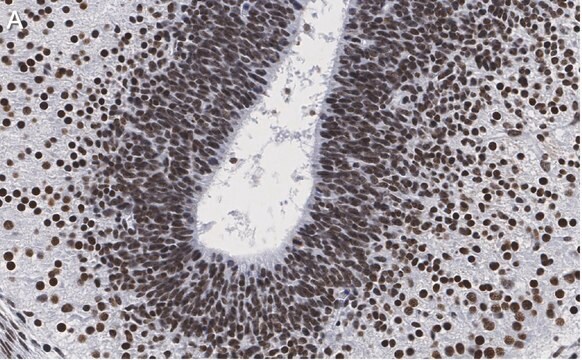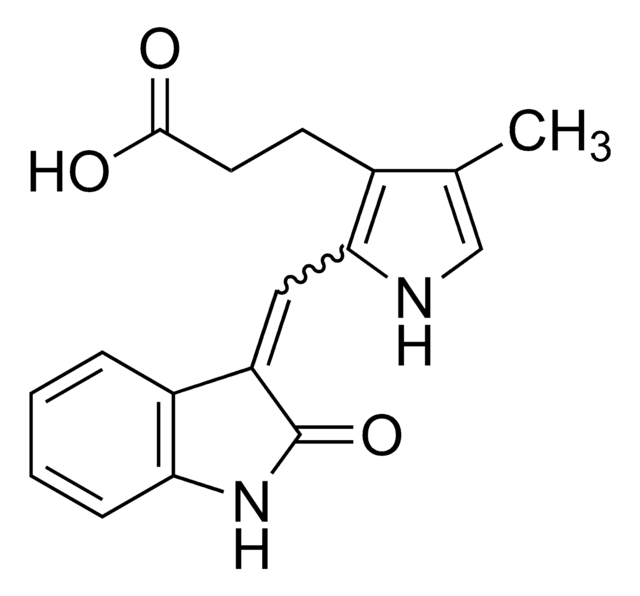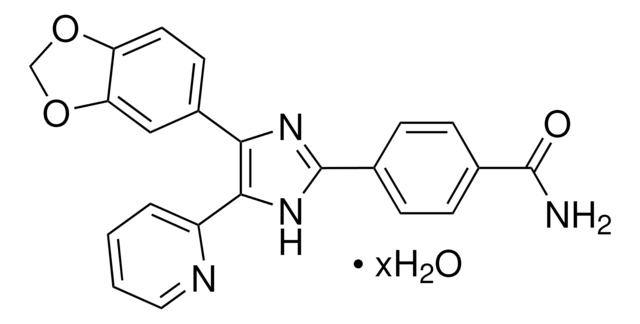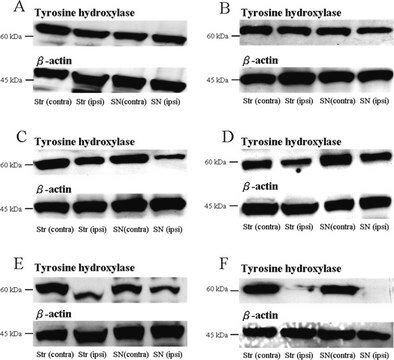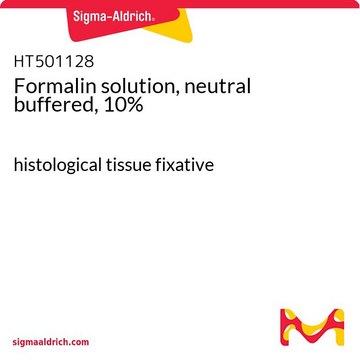추천 제품
생물학적 소스
rabbit
Quality Level
항체 형태
serum
항체 생산 유형
primary antibodies
클론
polyclonal
종 반응성
mouse, hamster
종 반응성(상동성에 의해 예측)
hamster (based on 100% sequence homology)
기술
western blot: suitable
동형
IgG
GenBank 수납 번호
UniProt 수납 번호
배송 상태
wet ice
타겟 번역 후 변형
unmodified
유전자 정보
hamster ... Lmx1A(101839559)
mouse ... Lmx1A(110648)
rat ... Lmx1A(289201)
일반 설명
LIM homeobox transcription factor 1-alpha (UniProt: Q04650; also known as LIM/homeobox protein LMX1A (LIM/homeobox protein 1; LMX-1)) is encoded by the LMX1A (also known as LMX1) gene (Gene ID: 101839559) in golden hamster. LMX-1 is a transcription factor that belongs to the LIM-homeodomain (LIM-HD) transcription factor family. It is induced within the ventral midbrain as a response to early signaling. LMX-1 is a necessary component for the development of the roof plate and for CNS dorsal cell date specification and the development of vertebrae. It is expressed in roof plate, an organizational locus found in the dorsal CNS that functions to moderate the differentiation and specification of adjacent neurons through the secretion of signaling molecules such as WNT and BMP. Recent studies have indicated that LMX-1 has high potential for stimulating the production of mesencephalic dopamine neurons (mesDA) for the therapeutic treatment of Parkinson disease, a condition characterized by dopaminergic neurotransmission decline resulting from the progression of mesDA neuronal degeneration within the substantia nigra pars compacta (SN).
특이성
Anti-LMX-1 is a rabbit polyclonal antibody that detects LMX-1. It targets an epitope within 80 amino acids from the C-terminal half.
면역원
Epitope: C-terminus
GST-tagged recombinant fragment corresponding to 80 amino acids from the C-terminal half of hamster LMX-1.
애플리케이션
Anti-LMX-1, Cat. No. AB10533, is a rabbit polyclonal antibody that detects mouse LMX-1 and is tested for use in Western Blotting.
Research Sub Category
Neuronal & Glial Markers
Neuronal & Glial Markers
Tested Applications Western Blotting Analysis: A 1:1,000 dilution of this antibody detected GST, His and TEV tagged Hamster LMX-1. Note: Actual optimal working dilutions must be determined by end user as specimens, and experimental conditions may vary with the end user.
품질
Evaluated by Western Blotting in mouse testis tissue lysate. Western Blotting Analysis: A 1:1,000 Dilution of this antibody detected LMX-1 in mouse testis tissue lysate.
표적 설명
Target molecular weight ~38 kDa observed. 42.8 kDa calculated. Uncharacterized bands may be observed in some lysate(s).
물리적 형태
Rabbit polyclonal antibody in serum with 0.05% sodium azide.
Unpurified
저장 및 안정성
Store at -10°C to -25°C. Handling Recommendations: Upon receipt and prior to removing the cap, centrifuge the vial and gently mix the solution. Aliquot into microcentrifuge tubes and store at -20°C. Avoid repeated freeze/thaw cycles, which may damage IgG and affect product performance.
분석 메모
Control
Mouse testis tissue lysate
Mouse testis tissue lysate
법적 정보
GenBank is a registered trademark of United States Department of Health and Human Services
면책조항
Unless otherwise stated in our catalog or other company documentation accompanying the product(s), our products are intended for research use only and are not to be used for any other purpose, which includes but is not limited to, unauthorized commercial uses, in vitro diagnostic uses, ex vivo or in vivo therapeutic uses or any type of consumption or application to humans or animals.
적합한 제품을 찾을 수 없으신가요?
당사의 제품 선택기 도구.을(를) 시도해 보세요.
Storage Class Code
10 - Combustible liquids
WGK
WGK 1
시험 성적서(COA)
제품의 로트/배치 번호를 입력하여 시험 성적서(COA)을 검색하십시오. 로트 및 배치 번호는 제품 라벨에 있는 ‘로트’ 또는 ‘배치’라는 용어 뒤에서 찾을 수 있습니다.
Carlos W Gantner et al.
STAR protocols, 1(2), 100065-100065 (2020-10-29)
Here, we describe a xeno-free, feeder-free, and chemically defined protocol for the generation of ventral midbrain dopaminergic (vmDA) progenitors from human pluripotent stem cells (hPSCs). This simple-to-follow protocol results in high yields of cryopreservable dopamine neurons across multiple hPSC lines.
Elizabeth J Paik et al.
Scientific reports, 8(1), 804-804 (2018-01-18)
Human embryonic stem cells (ESCs) and induced pluripotent stem cells (iPSCs) can provide sources for midbrain dopaminergic (mDA) neural progenitors (NPCs) for cell therapy to treat Parkinson's disease (PD) patients. However, the well-known line-to-cell line variability in the differentiation capacity
Miranda Robbins et al.
Stem cell research & therapy, 12(1), 574-574 (2021-11-15)
Stem cell-based therapies for neurodegenerative diseases like Parkinson's disease are a promising approach in regenerative medicine and are now moving towards early stage clinical trials. However, a number of challenges remain including the ability to grow stem cells in vitro
Molecular organization and timing of Wnt1 expression define cohorts of midbrain dopamine neuron progenitors in vivo.
Ashly Brown,Jason T Machan,Lindsay Hayes,Mark Zervas
The Journal of Comparative Neurology null
Satoshi Okawa et al.
Nature communications, 9(1), 2595-2595 (2018-07-04)
Single-cell RNA sequencing allows defining molecularly distinct cell subpopulations. However, the identification of specific sets of transcription factors (TFs) that define the identity of these subpopulations remains a challenge. Here we propose that subpopulation identity emerges from the synergistic activity
자사의 과학자팀은 생명 과학, 재료 과학, 화학 합성, 크로마토그래피, 분석 및 기타 많은 영역을 포함한 모든 과학 분야에 경험이 있습니다..
고객지원팀으로 연락바랍니다.
